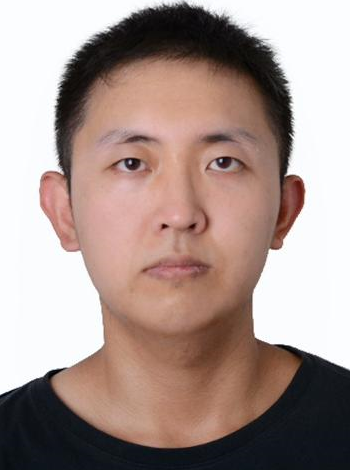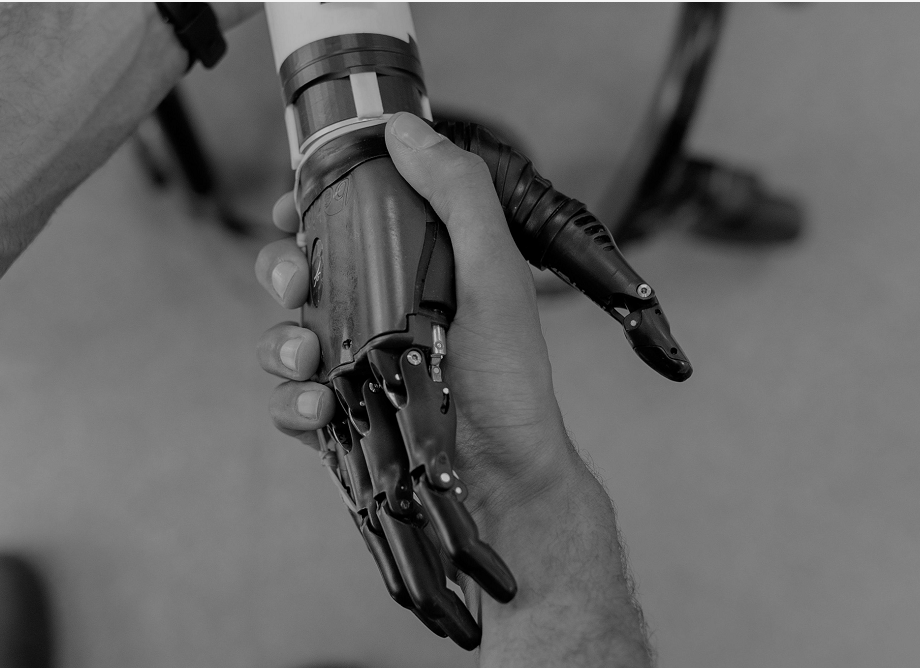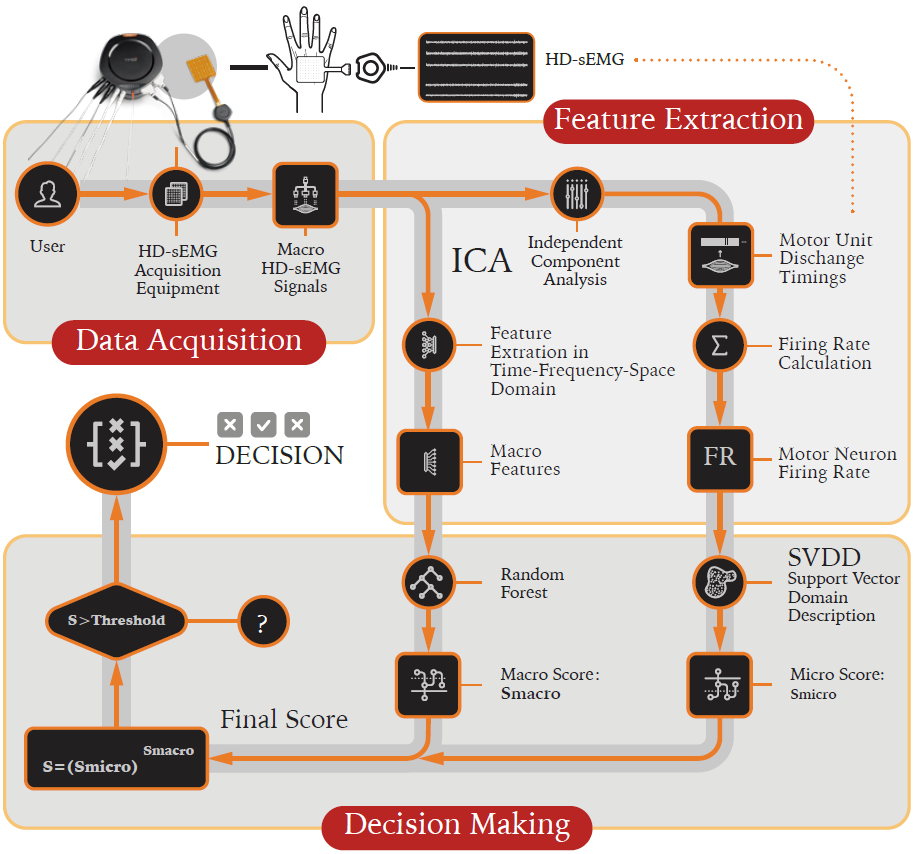
Xinyu Jiang
PhD Student,
School of Informatics,
The University of Edinburgh,
10 Crichton Street,
Edinburgh,
EH8 9AB, UK.
Email: xinyu dot jiang at ed dot ac dot uk
Biography
I received the B.Eng. (Honors) degree in Electronic Engineering and M.S. degree in Circuits and Systems, in 2018 and 2021, respectively, both from Fudan University, China, advised by Dr. Wei Chen and Dr. Chenyun Dai. I also collaborated closely with Dr. Ted Clancy. During my undergraduate stage, I was a member of "Engineering Education and Training Program of Excellence", an elite information science program in Fudan University for the top 5% talented students. During my master stage, I was awarded the Honor of Shanghai Outstanding Graduates. I'm now pursuing my Ph.D degree at the University of Edinburgh under the guidance of Dr. Kianoush Nazarpour. My research interests mainly include human-machine interfacing, physiological computing, machine learning and biomedical signal processing (EMG signals in particular) with applications to various industrial and clinical scenarios.
Publications
Accepted Articles (Selected):
Xinyu Jiang et al., "Explainable and Robust Deep Forests for EMG-Force Modeling", IEEE Journal of Biomedical and Health Informatics, 2023. View Article
Xinyu Jiang et al., "Optimizing the Cross-Day Performance of Electromyogram Biometric Decoder", IEEE Internet of Things Journal, 2022. View Article
Xinyu Jiang et al., "Random Channel Masks for Regularization of Least Squares-based Finger EMG-Force Modeling to Improve Cross-Day Performance", IEEE Transactions on Neural Systems and Rehabilitation Engineering, 2022. View Article
Xinyu Jiang et al., "Measuring Neuromuscular Electrophysiological Activities to Decode HD-sEMG Biometrics for Cross-Application Discrepant Personal Identification with Unknown Identities", IEEE Transactions on Instrumentation and Measurement, 2022. View Article
Xinyu Jiang et al., "Optimization of HD-sEMG based Cross-Day Hand Gesture Classification by Optimal Feature Extraction and Data Augmentation", IEEE Transactions on Human-Machine Systems, 2022. View Article
Xinyu Jiang et al., "Enhancing IoT Security via Cancelable HD-sEMG-based Biometric Authentication Password, Encoded by Gesture", IEEE Internet of Things Journal, 2021. View Article
Xinyu Jiang et al., "Data Management for Transfer Learning Approaches to Elbow EMG-Torque Modeling", IEEE Transactions on Biomedical Engineering, 2021. View Article
Xinyu Jiang et al., "Open Access Dataset, Toolbox and Benchmark Processing Results of High-Density Surface Electromyogram Recordings", IEEE Transactions on Neural Systems and Rehabilitation Engineering, 2021. View Article
Xinyu Jiang et al., "Neuromuscular Password-Based User Authentication", IEEE Transactions on Industrial Informatics, 2020. View Article
Xinyu Jiang et al., "Cancelable HD-sEMG-based Biometrics for Cross-Application Discrepant Personal Identification", IEEE Journal of Biomedical and Health Informatics, 2020. View Article
Xinyu Jiang et al., "Quantifying spatial activation patterns of motor units in finger extensor muscles", IEEE Journal of Biomedical and Health Informatics, 2020. View Article
Xinyu Jiang et al., "Independent decision path fusion for bimodal asynchronous brain–computer interface to discriminate multiclass mental states", IEEE Access, 2019. View Article
Xinyu Jiang et al., "Redundancy Removed Dual-Tree Discrete Wavelet Transform to Construct Compact Representations for Automated Seizure Detection", Applied Sciences, 2019. View Article
Ongoing Articles (Selected):
Xinyu Jiang et al., "Cybersecurity in Neural Interfaces: Survey and Future Trends", Under Review by Expert Systems with Applications.
Main Projects

EMG-based Motion Information Decoding for Intuitive Neuroprosthetic Control.
Estimating the continuous elbow torque trajectory from EMG signals is essential for intuitive and proportional control of neuroprostheses. To improve the generalization performance of EMG-torque relation models, we proposed a novel unsupervised EMG-Torque model calibration method, namely correlation-based data weighting (COR-W). Using our method, the EMG-torque regression model pre-trained by data acquired from other subjects can be automatically calibrated via data acquired from a new subject in an unsupervised way, using EMG signals only without the synchronized torque values.
Recent advancement in neuroprosthetic control also proved the excellent performance of motor unit (MU) discharge activities as a control input. Most current MU-based neuroprostheses can achieve the control of only one degree of freedom (DoF), because the docomposed MUs corresponding to different DoFs are mixed together after blind source separation. We have proved the spatial activation patterns of MUs corresponding to different fingers (DoFs) are distinguishable. The high MU-DoF classification accuracy indicates the promising prospects of simultaneous prosthetic control of multiple DoFs, using discharge activities of MUs associated with each individual DoF.

Novel Cancelable EMG Biometrics for User Authentication and Identification.
Individual differences of EMG signals increase the challenges to develop a generalized model for neuroprosthetic control applications. However, such property also indicates that EMG signals may be employed as a new biometric modality. Noncancelability and cross-application invariance are two natural flaws of traditional DNA, face and fingerprint biometric modalities. Once the biometric template is exposed, it is compromised forever, because users cannot replace a new template. Even worse, because the same biometrics may be employed as tokens for different accounts in multiple applications, the exposed template can be used to compromise other accounts. To solve these limitations, we proposed a cancelable and cross-application discrepant biometric approach based on HD-sEMG. HD-sEMG biometric patterns can be further encoded by selecting different muscle contraction tasks (serving as an encoding password), because sEMG signals under different tasks show distinct patterns. Once a biometric template is exposed to impostors, users can simply cancel the exposed template by changing a new muscle contraction task to generate a new template. A series of our work, for the first time, proved the high authentication/identification accuracy and excellent cancelability of HD-sEMG biometrics, in a cross-day validation.
Resources
We open source a dataset of High densitY Surface Electromyogram Recordings (named "Hyser") and a toolbox for neural interface research. We expect our dataset, toolbox and benchmark analyses can provide a unique platform to promote a wide range of neural interface research and collaboration among engineers all over the world in neural engineering area. The data and code are available on PhysioNet .